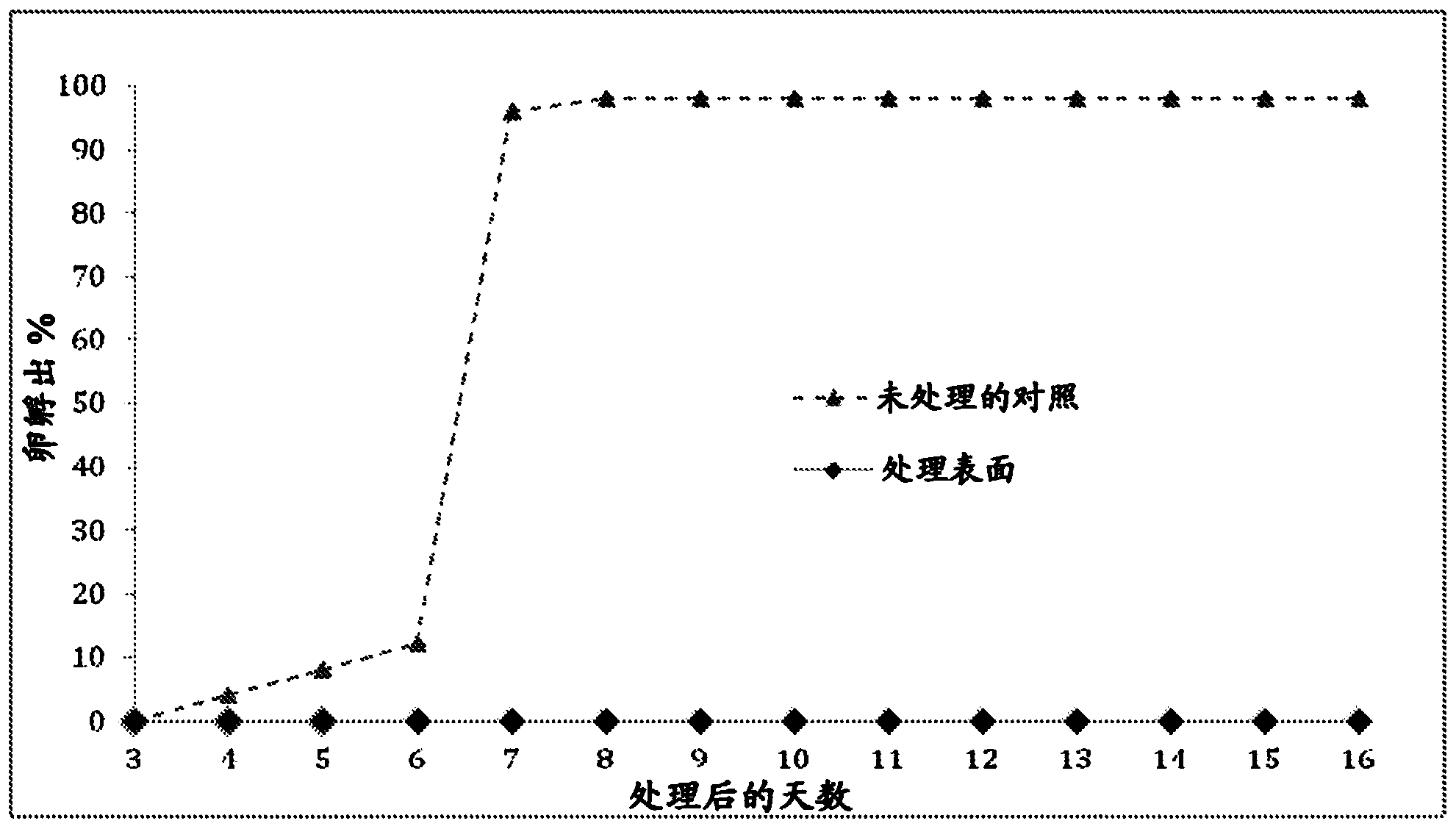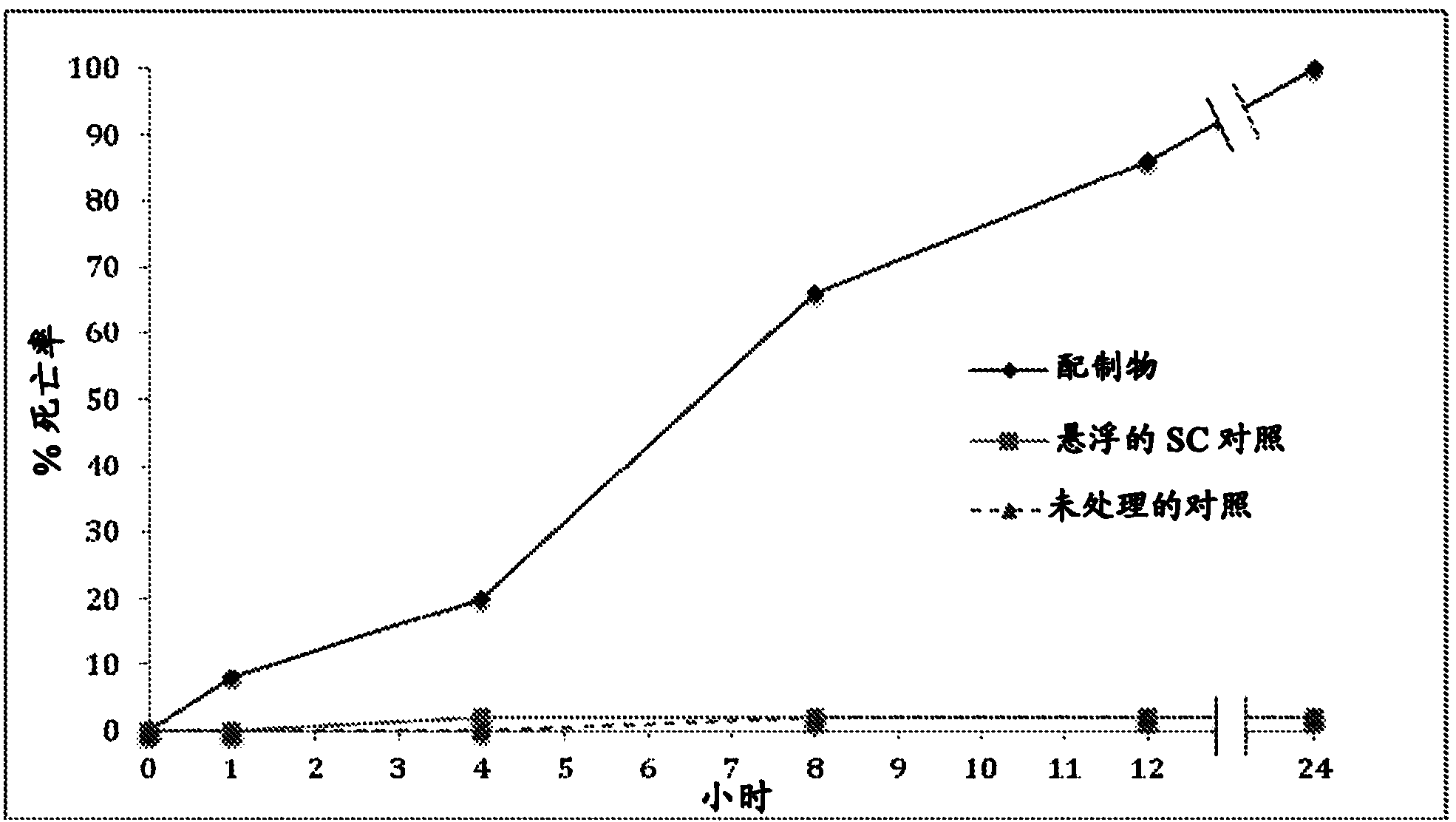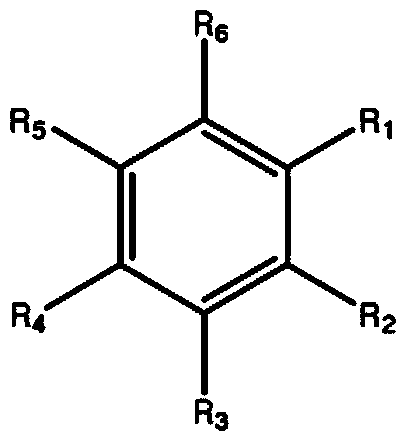Pest control formulations and methods of making and using same
A technology of insecticidal compositions and derivatives, applied in the field of compositions for controlling various pests, can solve problems such as high cost
- Summary
- Abstract
- Description
- Claims
- Application Information
AI Technical Summary
Problems solved by technology
Method used
Image
Examples
Embodiment 1
[0093] Example 1-dried residue insecticidal activity
[0094] Using isopropyl alcohol (isopropanol) as a carrier diluent, a preparation containing 5.5% by weight neem oil, 15.5% by weight acetophenone, 8% by weight natural oils (lemongrass oil, spearmint oil, clove oil) and wintergreen oil), and 5.0% by weight of ethoxylated castor oil in 'Solution A'. A series of dilutions were made including 100% Solution A, 50% Solution A in isopropanol, 25% Solution A in isopropanol, and 10% Solution A in isopropanol. 1.0 mL of each solution was applied to 90-mm filter paper bases in petri dishes. The substrates were allowed to air dry for two hours and then infested with adult bed bugs (approximately half male and half female). The same experiments for each treatment group and negative control group were tested simultaneously. Mortality was observed at indicated time intervals after infestation. Adult bedbugs were counted dead if they were unresponsive when stimulated.
[0095] The p...
Embodiment 2
[0098]Example 2 - Dry Residue Insecticide Activity of Various Insecticidal Natural Oils
[0099] This example illustrates the insecticidal activity of dry residue of formulations containing various insecticidal natural oils as active ingredients. By adding 2.5% by weight of insecticidal natural oil as active ingredient, 2.5% by weight of sodium lauryl sulfate, 5.0% by weight of solvent (such as ethyl lactate or acetophenone as recorded) and an appropriate amount of water as diluent Combine to prepare a solution. 1.0 mL of each solution was applied to three replicates containing 90 mm diameter filter paper in Petri dishes (treatment groups). Three identical samples of the treated and untreated controls were allowed to dry for two hours prior to infestation with a known number of adult bedbugs (approximately half male and half female).
[0100] Bed bug mortality was assessed daily immediately post-infestation and at time intervals of 2, 4, 8, 12 and 24 hours post-infestation, ...
Embodiment 3
[0105] The insecticidal activity of dry residue of embodiment 3-multiple solvents
[0106] This example illustrates the insecticidal activity of dry residue of formulations comprising neem oil and various organic solvents including alcohols, ketones, esters and carboxylic acids. Solutions were prepared using: 5.5% by weight of neem oil; the weight percent of organic solvent given in Table 5 and an appropriate amount of isopropanol as a carrier diluent. The weight percent of each solvent was varied to ensure a consistent molar amount of solvent in each solution (final concentration of 1.5 mol / kg). Treatment groups for each solution were prepared by treating a 90 mm diameter filter paper with 1.0 mL of the solution and allowing it to air dry for four hours. Four hours after treatment, a known number of adults was added to each treated dish. Bedbug mortality was assessed immediately after infestation and at intervals of 1 hour, 2 hours, 4 hours, 6 hours, 8 hours, 10 hours, 12 h...
PUM
 Login to View More
Login to View More Abstract
Description
Claims
Application Information
 Login to View More
Login to View More - R&D
- Intellectual Property
- Life Sciences
- Materials
- Tech Scout
- Unparalleled Data Quality
- Higher Quality Content
- 60% Fewer Hallucinations
Browse by: Latest US Patents, China's latest patents, Technical Efficacy Thesaurus, Application Domain, Technology Topic, Popular Technical Reports.
© 2025 PatSnap. All rights reserved.Legal|Privacy policy|Modern Slavery Act Transparency Statement|Sitemap|About US| Contact US: help@patsnap.com



